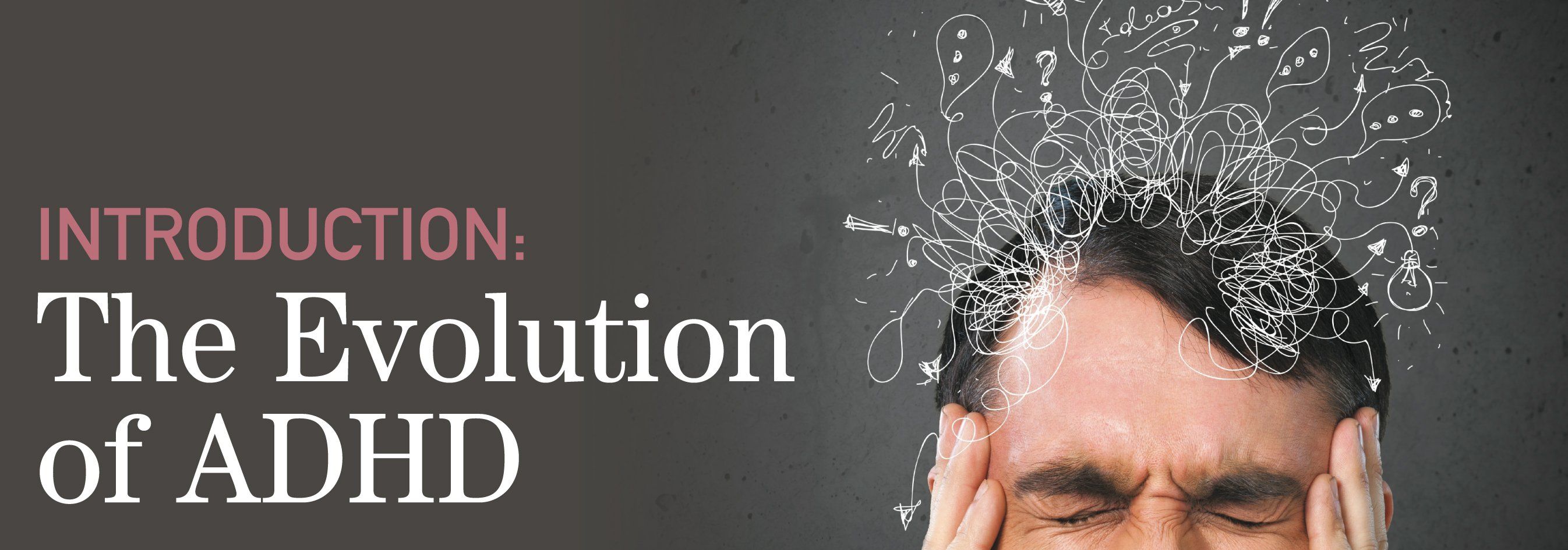Publication
Article
Psychiatric Times
Introduction: The Evolution of ADHD
Author(s):
In this two-part Special Report, the authors provide evidence-based information to guide our assessment, diagnosis, and treatment of ADHD across the lifespan.
Shutterstock.com/Billion Photos

ADHD is a neurodevelopmental disorder commonly occurring in children and adolescents.However, it has recently become accepted that the symptoms of ADHD can often continue into adulthood with an estimated lifetime prevalence of ADHD in US adults of 8.1%.1 It is thought that the earliest accounts of inattention as a disorder, in children and adults, were recorded in a medical textbook by Melchior Adam Weikard in the early 1700s. “Weikard described adults and children who were inattentive, distractible, lacking in persistence, overactive and impulsive, which is quite similar to today’s description of ADHD.”2
It has taken decades of research to show that some children with ADHD will continue to have symptoms into adulthood (DSM-5 provides a description of the symptoms in adults). ADHD was first documented in DSM-II, and the disorder was referred to as Hyperkinetic Reaction of Childhood and described in one sentence. With DSM-III, the classification of mental disorders progressed from a simple description to the definition of disorders with specific diagnostic criteria.3 Hyperkinetic Reaction of Childhood was renamed Attention Deficit Disorder and the subtypes of “with and without Hyperactivity” were introduced. The term as we know it today, Attention Deficit Hyperactivity Disorder, was not introduced until DSM-III-R, with the controversial elimination of ADD without Hyperactivity.4 Subsequent editions of DSM further described specific subtypes/presentations of ADHD (predominantly Inattentive, predominantly Hyperactive-Impulsive, and Combined) with modifiers, 18 primary symptoms, and symptom thresholds necessary for a diagnosis of ADHD. DSM-5 addresses adults with ADHD to help guide psychiatrists and other mental health providers in the diagnosis and treatment of ADHD.
The evolution of ADHD has not come without controversy. Controversial topics around ADHD have been presented in medical history and continue today. In this two-part Special Report, the authors provide evidence-based information to guide our assessment, diagnosis, and treatment of ADHD across the lifespan.
In Part 1, Julia Rucklidge, PhD, Mairin Taylor, PhD, and Jeanette Johnstone, PhD, provide a review of the role of diet and nutritional supplementation in the manifestation of symptoms and the treatment of ADHD in their article “Do Diet and Nutrition Affect ADHD? Facts and Clinical Considerations.” This topic comes up frequently in the clinical setting, especially by parents who are leery of treatment with psychotropic medications such as stimulants.
While there are various reasons why a parent, guardian, or patient might be hesitant to take a stimulant medication, Lisa L. Weyandt, PhD, and Stephanie Bjorn, the authors of “Issues Pertaining to Misuse of ADHD Prescription Medications” challenge the psychiatrist’s (and other mental health professionals’) role in stimulant misuse. They stress the importance of a comprehensive clinical evaluation with collateral information before making a diagnosis of ADHD and treating individuals for ADHD with psychostimulants.
As we further consider the utility of a comprehensive clinical evaluation in the diagnosis and treatment of ADHD, Gail A. Mattox, MD, and Sarah Y. Vinson, MD, outline a comprehensive, culturally competent method to evaluate symptoms of ADHD in the African-American population using a Case Vignette in “Culturally Competent Approaches to ADHD: Issues in African-American Populations.” They include practical ways we, as psychiatrists, can help to decrease the stigma towards seeking mental health treatment and minimize barriers to treatment for this population.
In Part 2 of the Special Report in the October issue, Ciro Marangoni, MD, discusses ADHD differential diagnoses and highlights core clinical features that distinguish ADHD from bipolar disorder and borderline personality disorder in “ADHD, Bipolar Disorder, or Borderline Personality Disorder: Getting to the Right Diagnosis.”
When we think about ADHD differential diagnoses it is vital that we include sleep disorders. Not only can symptoms of sleep disorders mimic those of ADHD, but sleep disorders can be comorbid with ADHD. Margaret D. Weiss, MD, PhD and Nicole McBride, MPH, the authors of “ADHD: A 24-Hour Disorder” urge psychiatrists to acknowledge the reciprocal relationship between disordered sleep and ADHD outcomes. Optimal patient outcomes require treatment and management of ADHD and sleep.
Philip Shaw, BM BCh, PhD, provides a narrative review of the most recent literature on the complex challenges with neuroimaging and the heterogenic nature of ADHD in “Neuroimaging in ADHD: What’s New?” He offers insights into how neuroimaging might eventually translate into clinically useful tools.
Disclosures:
Dr Griffin is Assistant Professor, Clinical Psychiatry, Medical Director, Comprehensive Attention Deficit Hyperactivity Disorder Clinic, Faculty Career Advisor for the Urban Health Program, and Consultant, Illinois DocAssist Program, University of Illinois College of Medicine, Chicago, IL.
Dr Griffin reports no conflicts of interest concerning the subject matter of this Special Report.
References:
1. Kessler RC, Berglund P, Demler O, et al. Lifetime prevalence and age-of-onset distributions of DSM-IV disorders in the National Comorbidity Survey Replication. Arch Gen Psychiatry. 2005;62:6:593-602.
2. Barkley RA. Attention-Deficit Hyperactivity Disorder: A Handbook for Diagnosis and Treatment, 4th ed. New York, NY: The Guildford Press; 2015.
3. Lynn DJ, Mrkin IR, Lanese DM, et al. Correspondence between DSM-II hyperkinetic reaction and DSM-III attention deficit disorder. J Am Acad Child Psychiatry. 1983;22:349-350.
4. Epstein JN, Loren REA. Changes in the definition of ADHD in DSM-5: subtle but important. Neuropsychiatry (London). 2013;3:455-458.

Newsletter
Receive trusted psychiatric news, expert analysis, and clinical insights — subscribe today to support your practice and your patients.






